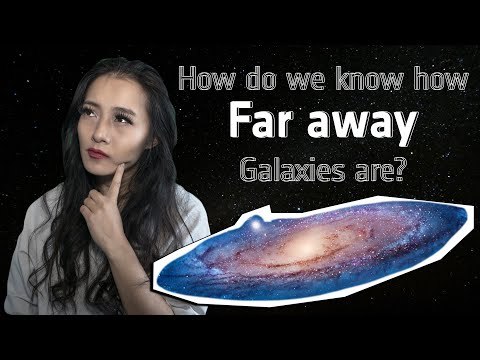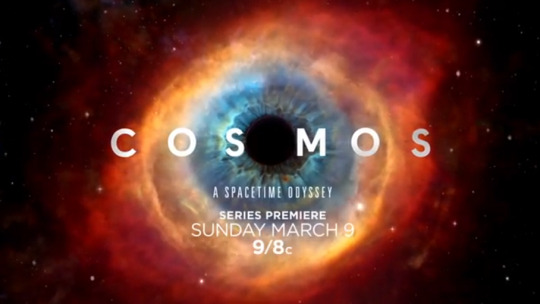#science communicators
Text
Astronomy Channel Spotlight: Space Mog (Dr. Maggie Lieu)
Astronomy Channel Spotlight: Space Mog (Dr. Maggie Lieu)
While many may know of the more popular and bigger astronomy Youtube channels like SciShow Space, Anton Petrov (‘What da Math’), and even Fraser Cain (Founder of the Universe Today website), as well as Astronomy Cast, there are some less well-known astronomy education channels floating around Youtube, especially those that are, for once, not hosted or created by only white people, with all due…

View On WordPress
0 notes
Audio
Curiosity Daily Podcast: How to Communicate About Science (w/ 3M’s Jayshree Seth) and Get Out of a Creative Rut
Learn how the 2019 State of Science Index suggests we talk about science differently, with a special guest: 3M Corporate Scientist and Chief Science Advocate Jayshree Seth. Plus: learn a simple strategy for getting out of a creative rut.
See the full State of Science Index here: https://3M.com/scienceindex
Follow Jayshree Seth on Twitter: https://twitter.com/jseth2
In this podcast, Cody Gough and Ashley Hamer discuss a simple strategy for getting out of a creative rut according to a former Nike engineer, with the following story from Curiosity.com: https://curiosity.im/2u4W6ew
If you love our show and you're interested in hearing full-length interviews, then please consider supporting us on Patreon. You'll get exclusive episodes and access to our archives as soon as you become a Patron! https://www.patreon.com/curiositydotcom
Download the FREE 5-star Curiosity app for Android and iOS at https://curiosity.im/podcast-app. And Amazon smart speaker users: you can listen to our podcast as part of your Amazon Alexa Flash Briefing — just click “enable” here: https://curiosity.im/podcast-flash-briefing.
Support the show.
via https://omny.fm/shows/curiosity-podcast/how-to-communicate-about-science-w-3m-s-jayshree-s
#Jayshree Seth#3M#scicomm#science communications#science communicators#science communicator#communicating#communications#science#state of science#state of science index#new research#new study#how to communicate#how to talk#talk about science#talking about science#creativity#how to be more creative#how to be creative#life hack#creative rut#creativity hack#podcast#podcasts#great podcast#trypod#podernfamily#daily podcast#science podcasts
0 notes
Text
විද්යා මාධ්යවේදීන් සඳහා සංගමයක්!
විද්යා මාධ්යවේදීන් සඳහා සංගමයක්!
ශ්රී ලංකාවේ විද්යා මාධ්යවේදීන් සඳහා සංගමයක් පිහිටුවා ගැනීම අරමුණු කර ගත් මූලික සාකච්ඡාවක් ඊයේ (2018-10-17) කොළඹ 07, විද්යා මාවතෙහි පිහිටි ශ්රී ලංකා විද්යාභිවර්ධන සංගමයේ ප්රධාන ශාලාවේ දී පැවැත්විණි. ඒ සඳහා විද්යා සංනිවේදනයේ යෙදී සිටින, මාධ්යවේදීන්, විද්යාඥයන් විශ්වවිද්යාල ආචාර්යවරුන් ඇතුළු පිරිසක් සහභාගී වූහ.
එහිදී, එවන් සංගමයක මුහුණුවර කෙසේ විය යුතු දැයි සාකච්ඡාවට බඳුන් වූ අතර ඒ සඳහා…
View On WordPress
#Nalaka Gunawardhane#science communicators#SLAAS#SLASJ#Sri Lanka Science Journalist#විද්යා මාධ්යවේදීන්ගේ සංගමය#විද්යා සන්නිවේදක#ශ්රී ලංකා විද්යා මාධ්යවේදීන්ගේ සංගමය
0 notes
Photo

One of the most important TV series ever made in general and specifically for educational and scientific purposes being revived after decades and being presented by a black astrophysicist. Can we talk about how this is a really huge thing and should make it a priority if possible to watch this show. The world needs it and I have faith in Neil deGrasse Tyson.
#science#science communicators#science enthusiasm#cosmos#Neil deGrasse Tyson#representation#black scientists
738 notes
·
View notes
Text
Science Writing
This week, I want to highlight what I think is a rather underappreciated and under-promoted science career: science writing.
Science writers (or science communicators to be more general) are ambassadors of the science world, making otherwise complicated and intimidating science understandable for the general public. They are teachers who can educate millions of people at a time.
As our society relies more and more on science and technology to solve some very large problems, science communicators play a crucial role in keeping the public informed about new ideas and discoveries.
To demonstrate my point, check out this blog post at Scientific American. After Time Magazine nominated the Higgs Boson for “Person of the Year”, science writer Michael Moyer went through Time’s description of the Higgs particle and corrected every statement that was wrong. In his own words:
Under ordinary circumstances, we would be all for the elevation of the Higgs to “Person of the Year” status, if only to further honor the heroic efforts of thousands of scientists and engineers who made the discovery possible (more on that below). But Time’s nomination threatens to do more harm than good. Every single sentence in Time’s nomination contains at least one serious error.
Clearly, the world could use a few more science writers.
This week I will be sharing some of my favorite lady science writers. Do you have a favorite female science writer or communicator? Let me know and I will make a post about her too!
#higgs boson particle#science writers#science communicators#scientific american#michael moyer#time magazine#person of the year#science
0 notes
Text
Recruiting more brainpower: the WHO's Dr. Abdinasir Abubakar on how to tackle nodding disease
Thomas Edison said that even seeming dead ends in his early electrical engineering work were steps forward: he'd discovered three thousand materials that couldn't serve as lightbulb filaments and therefore had gotten closer to finding one that would. Dr. Abdinasir Abubakar of the World Health Organization might say the same thing about nodding disease research in Uganda and Southern Sudan. Nodding disease, which causes seizures and brain atrophy in children 5-15 years old and is expected to eventually kill thousands of young people in the region, still has no known cause or cure. When I interviewed him, he outlined several possible causal factors researchers have tested for so far through skin, urine, and blood samples from affected children: various parasitic infections, heavy metal poisoning, metabolic issues, genetic susceptibility to developing illness. So far the only commonality among patients seems to be infection with the Onchocheriasis Volvulus parasitic worm, but that's prevalent in the region, including in plenty of areas without cases of nodding disease. Future research directions include looking into the vitamin deficiencies sometimes observed in children with nodding disease and exploring the possible role of several toxic and infectious agents. And community health workers have been taught how to observe and survey families with sick children to collect epidemiological data. In other words, the world's leading medical organizations have sent several dedicated experts to look into this condition, but no one has found any conclusive leads. And, while Uganda hosts an international conference this month on nodding disease, no specific funds or organizations or even initiatives have been set aside just for the syndrome. When asked how the rest of the world could assist with nodding disease research, Dr. Abubakar emphasized the need to recruit qualified scientists. “Of course, readers and other good Samaritan people can contribute [money] through WHO, UNICEF, local organizations or other research institutions. But more important is the advocacy campaign to sensitize the researchers and clinicians to look into the NS problem and actively participate in the investigations.” Uganda currently hosts an international conference on nodding disease research and treatment, with governmental and nonprofit researchers in attendance. Hopefully that, and the publicity efforts by Dr. Abubakar and others, will bring more brainpower to the table. So, right now, maybe it's up to the scientific communicators, and publicists and advocates, to propel nodding disease research forward by playing a role as vital as that of those working in the laboratory. All of us can inspire those with the necessary technical knowledge to get on board and work together to uncover causes and treatments.
5 notes
·
View notes